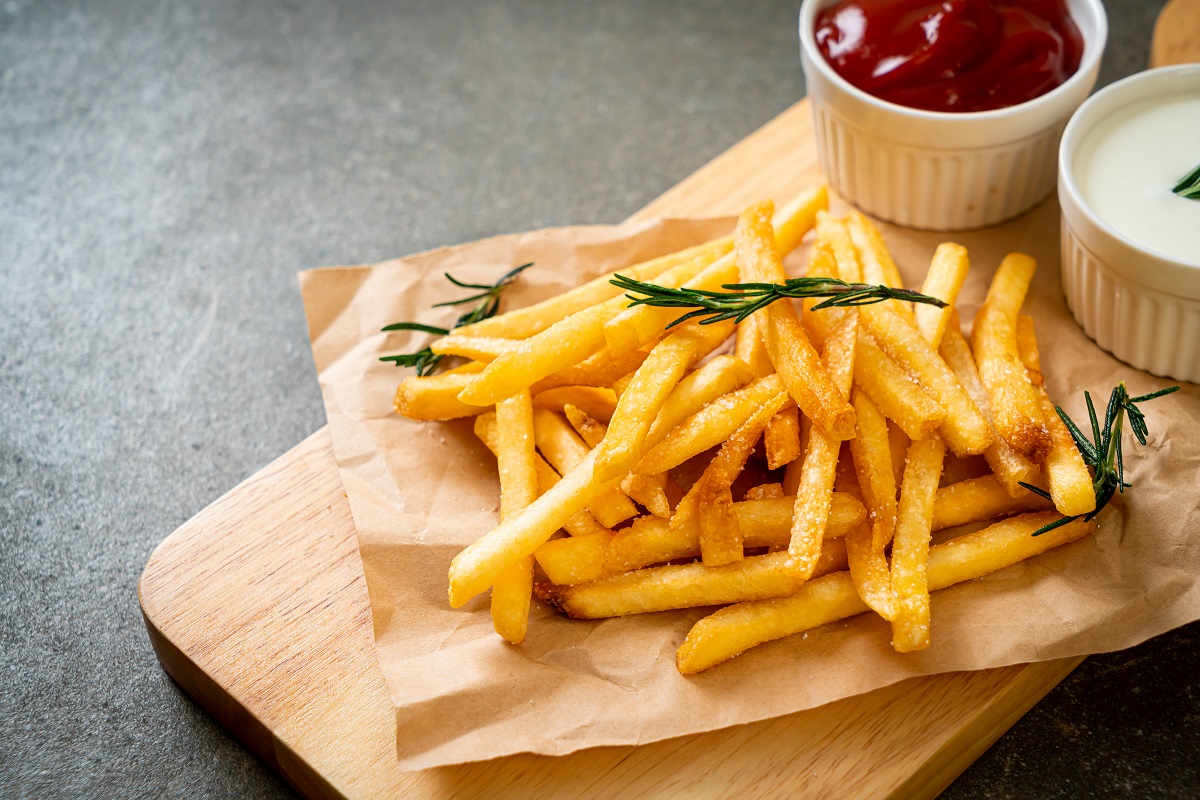Cooking oils are the driving force behind restaurant kitchens. Oil, after all, is both a food and a cooking medium. It’s used as much for flavor as it is to give foods that familiar, and craveable, crispy golden-brown coating.
With that said, there are so many types of cooking oil for chefs and restaurateurs to choose from– olive oil, canola oil, vegetable oil, coconut oil, sesame oil, avocado oil, sunflower oil, peanut oil… the list goes on, and on.
No kitchen is complete without a few of these oils on hand. So, how do you choose the best fryer oil, and what oils do restaurants use? Join us as we compare the different kinds of oil and their best uses in your restaurant.
The Importance of Choosing the Right Cooking Oils
Because all oil is not created equal, the one you choose matters.
In some cases, oils are essentially interchangeable. If you’re making a vinaigrette or a marinade, for example, practically any oil will work, even if the flavor and consistency may be different in the end.
But when you’re cooking or frying with oil, your choice could make or break your dish. So, what should you look for when deciding? These are the factors to consider:
- Flavor – Some oils, including sesame oil and olive oil, bring a particular flavor to a dish. Others, like canola oil or grapeseed oil, are essentially flavorless. Whether you want the oil to flavor your dish or not is an enormous part of your decision.
- Smoke point – Every cooking oil has a smoke point—the temperature at which it stops shimmering and starts burning. Low-smoke point oils, such as extra virgin olive oil (EVOO), burn easily; they’re best for low-heat cooking and for use as finishing oils. High-smoke point oils, like avocado and peanut oils, are ideal for high-heat cooking applications like frying and sautéeing. Learn more about controlling heat to give better oil life here!
- Health – Whether they’re used for flavoring a meal or cooking it, oils have unique nutritional values. As a result, they have an impact on health. The healthiest oils have low or no trans and saturated fats. There’s also the question of cooking oil allergies: Although most cooking oils are refined to the point of being safe for diners with allergies, some people with severe afflictions may have reactions to peanut and soybean oils.
- Cost – If you run a restaurant, you already know that profit margins are thin, so cost is another major deciding factor. A good bottle of olive oil can be $30 or more, while humble canola oil averages to $1.27 per pound. In general, you’ll want to cook with affordable oils and save the pricier ones for imparting flavor at the end of cooking. Remember, different oils serve different purposes.
When you’re running a kitchen, you may not have the time or energy to consider all this. Luckily, we’ve done the work of comparing oils for you—so you can spend less time ordering and more time cooking.

Seven of the Top Cooking and Frying Oils
While there are countless types of oils, we’ll cover the ones you’re most likely to find on restaurant supplier lists.
1. Extra Virgin Olive Oil
Made by pressing whole olives, extra virgin olive oil (EVOO) is a luscious oil that coats the tongue. The smoke point of extra virgin olive oil—the most commonly found oil in the U.S.—is around 350°F. That makes it a poor contender for frying oil, though you can still use it to pan fry or sear foods.
The good news is that EVOO is so delicious on its own that you won’t miss frying with it. With a rich, slightly bitter taste and luxurious mouthfeel, this finishing oil is a treat in dressings, marinades, or drizzled on top of a plate as it leaves the kitchen. It’s also one of the more expensive cooking oils, so no one’s complaining about using it sparingly.
2. Coconut Oil
You’ll find two types of coconut oil to use in your kitchen: unrefined (virgin) and refined. Both are on the higher end of the cost spectrum.
Unrefined coconut oil retains a coconut flavor and has a smoke point of 350°F; refined coconut oil tastes neutral and has a smoke point of 400°F.
By now, you might start to see a pattern. A low smoke point oil is better for low-temperature cooking methods, while a high smoke point oil is fine for high-heat applications. In general, coconut oil is used for sautéeing, especially in Indian dishes where the flavor of virgin coconut oil is appreciated.
Coconut oil has one other quirk: Because of its high saturated fat content, it’s solid at room temperature. That makes it difficult to use in dressings but perfect for replacing butter in baked goods.
3. Sunflower and Safflower Oils
Sunflower and safflower oil come from the seeds of two different plants, but they’re similar enough that we’ve lumped them together. Sunflower oil has a smoke point of 450°F, while safflower reaches 510°F. As such, these oils are perfect for:
- Deep frying
- Shallow frying
- Heavy searing
- Sautéeing
Because they’re neutral in flavor, you can also use sunflower and safflower oils in vinaigrettes where you want the acid to shine through.
As an added benefit, sunflower oil is also a good source of vitamin E and vitamin K. Plus, both oils are quite affordable.
4. Canola Oil
Also known as rapeseed oil, canola oil is made by crushing the seeds of the canola plant. Similar to sunflower oil, canola has a high smoke point (468°F) that makes it ideal for frying. Even in the high, prolonged heat of the deep fryer, canola oil won’t deteriorate or develop significant trans fatty acids, so it’s a healthful choice.
It also has a neutral flavor, meaning it won’t color the taste of your food. Canola oil’s mild taste makes it an excellent candidate for dressings, marinades, and more—especially because it’s one of the least pricey cooking oils. Learn more about canola oil vs vegetable oil here.
5. Soybean Oil
One of the most popular vegetable oils in the U.S., soybean oil has an astounding 70% market share. Perhaps that’s because soybeans are one of the most common crops grown in the country.
But that’s not the only reason why soybean oil is so prevalent. It’s affordable, and it may also be the most healthy oil to cook with. Not only is soybean oil trans-fat-free, but according to the U.S. Food and Drug Administration (FDA), it can actually reduce the risk of coronary heart disease. Therefore, this is a common oil for those looking for a healthy cooking option. Learn more about soybean oil and heart health in our complete guide.
With its high smoke point of 450°F, soybean oil is an excellent candidate for the deep fryer.
6. Peanut Oil
Like coconut oil, peanut oil comes in two varieties:
- Unrefined peanut oil – This oil, which has a peanut-forward taste and may trigger allergies, has a smoke point of 350°F. Thanks to its slightly nutty flavor, unrefined peanut finds its way into certain Indian and Thai dishes. You can use it for lower-heat cooking, as well as in sauces and marinades.
- Refined peanut oil – This oil has a more subtle flavor and a smoke point of 450°F. Like other high smoke point oils, refined peanut oil is excellent for stir-frying, roasting, and deep frying.
In the restaurant kitchen, unless you’re cooking food from cuisines that require that peanut flavor, you’ll probably reach for refined peanut oil by the drum-full—it’s one of the cheapest oils on the market. Learn more about peanut oil substitutes here.
7. Palm Oil
Palm oil is another cooking oil you’ll find in some restaurant kitchens, as it’s quite affordable and widely available. Its smoke point is just over 450°F, so it joins peanut and canola oil as a deep-fry dynamo.
Although it’s well suited to all cooking styles, palm oil is falling out of fashion due to its environmental and health implications. According to the American Heart Association, non-tropical vegetable oils—like canola, soybean, and sunflower—are healthier than palm oil, which has increased saturated fat. It’s also one of the main drivers of deforestation in tropical countries.
When sourced ethically, palm oil may be worth using. However, it’s worth questioning where your supplier gets its palm oil (or opting for a different oil entirely to be on the safe side).
Best Practices in Oil Management
Once you’ve chosen your favorite oils, there’s still the question of properly storing and disposing of them. Here are some tips:
- Store oils in a cool, dark place – Cooking oils are prone to developing rancid flavors when exposed to warmth and sunlight. We suggest keeping all oils in a dark, temperature-controlled room or storage unit.
- Filter your oil frequently – Clean and filter your deep fryer often to extend the life of your oil. Better yet, use a fryer filter machine to eliminate the manual element of filtering.
- Recycle your oil – Rather than throwing used oil away, ensure it’s picked up and recycled by a company that cares about the environment. Used cooking oil is a valuable product that can be used to make glycerin and biofuel.
Elevating Your Kitchen with Proper Oil Management
From flavor to smoke point, the oil you choose matters. Some of the tastiest oils aren’t made for frying, while other neutral oils are perfect for high heat.
As long as you understand the differences between each oil, you can cook in complete confidence with any oil you have.
Whether you need help choosing an oil or support with acquiring and recycling it, we can help. At Restaurant Technologies, we specialize in cooking oil management designed to let you focus on cooking, not on dealing with messy cooking oils.
Contact us today to learn more!
Sources:
- The Washington Post. Vegetable oil prices soar, far outstripping other food inflation. https://www.washingtonpost.com/business/2022/05/11/vegetable-oil-prices-surge
- American Heart Association. Healthy Cooking Oils. https://www.heart.org/en/healthy-living/healthy-eating/eat-smart/fats/healthy-cooking-oils
- Toast. State of Canola Oil Prices: Wholesale Restaurant Food Cost Trends. https://pos.toasttab.com/blog/on-the-line/canola-oil-prices
- Bon Appétit. The Best Oils for Cooking, Grilling, Baking, and Beyond. https://www.bonappetit.com/test-kitchen/ingredients/article/types-of-cooking-oil
- Bon Appétit. The Best Oils for Cooking, Grilling, Baking, and Beyond. https://www.bonappetit.com/test-kitchen/ingredients/article/types-of-cooking-oil
- MasterClass. Cooking Oils and Smoke Points: What to Know and How to Choose the Right Cooking Oil. https://www.masterclass.com/articles/cooking-oils-and-smoke-points-what-to-know-and-how-to-choose
- WebMD. Sunflower Oil: Is It Good for You? https://www.webmd.com/diet/sunflower-oil-good-for-you
- Canola Council of Canada. Canola Oil. https://www.canolacouncil.org/about-canola/oil/
- Restaurant Technologies. Cooking Oil Management 101. https://www.rti-inc.com/learning-center/oil-management-101/
- Restaurant Technologies. Is Soybean Oil Bad For Your Heart? https://www.rti-inc.com/blog/heart-health-and-soybean-oil/
- MasterClass. Cooking Oils and Smoke Points: What to Know and How to Choose the Right Cooking Oil. https://www.masterclass.com/articles/cooking-oils-and-smoke-points-what-to-know-and-how-to-choose
- Bon Appétit. The Best Oils for Cooking, Grilling, Baking, and Beyond. https://www.bonappetit.com/test-kitchen/ingredients/article/types-of-cooking-oil
- Bon Appétit. The Best Oils for Cooking, Grilling, Baking, and Beyond. https://www.bonappetit.com/test-kitchen/ingredients/article/types-of-cooking-oil
- Bon Appétit. The Best Oils for Cooking, Grilling, Baking, and Beyond. https://www.bonappetit.com/test-kitchen/ingredients/article/types-of-cooking-oil
- American Heart Association. Healthy Cooking Oils. https://www.heart.org/en/healthy-living/healthy-eating/eat-smart/fats/healthy-cooking-oils
- World Wildlife Fund. 8 THINGS TO KNOW ABOUT PALM OIL. https://www.wwf.org.uk/updates/8-things-know-about-palm-oil






